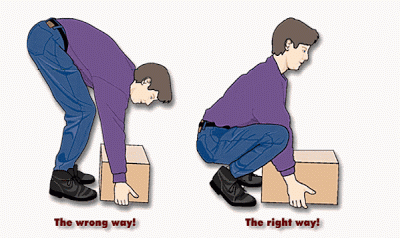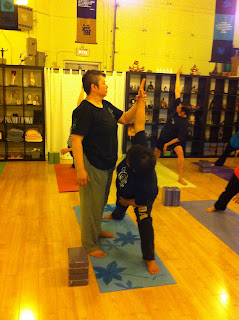Sometimes called a slipped or ruptured disk, a herniated disk most often occurs in your lower back. It is one of the most common causes of low back pain, as well as leg pain (sciatica).
Between 60% and 80% of people will experience low back pain at some point in their lives. A high percentage of people will have low back and leg pain caused by a herniated disk.
Although a herniated disk can sometimes be very painful, most people feel much better with just a few weeks or months of nonsurgical treatment.
Anatomy
Your spine is made up of 24 bones, called vertebrae, that are stacked on top of one another. These bones connect to create a canal that protects the spinal cord.
Five vertebrae make up the lower back. This area is called your lumbar spine.
Other parts of your spine include:
Spinal cord and nerves:
These "electrical cables" travel through the spinal canal carrying messages between your brain and muscles.
Intervertebral disks:
In between your vertebrae are flexible intervertebral disks. They act as shock absorbers when your walk or run.
Intervertebral disks are flat and round, and about a half inch thick. They are made up of two components:
This is the tough, flexible outer ring of the disk.
Nucleus pulposus:
This is the soft, jelly-like center of the disk.
Description
A disk begins to herniate when its jelly-like nucleus pushes against its outer ring due to wear and tear or a sudden injury. This pressure against the outer ring may cause lower back pain. If the disk is very worn or injured, the jelly-like center may squeeze all the way through.
Once the nucleus breaks — or herniates — through the outer ring, pain in the lower back may improve. Sciatic leg pain, however, increases. This is because the jelly-like material inflames the spinal nerves. It may also put pressure on these sensitive spinal nerves, causing pain, numbness, or weakness in one or both legs.
Cause
In many cases, a herniated disk is related to the natural aging of your spine.
In children and young adults, disks have a high water content. As we get older, our disks begin to dry out and weaken. The disks begin to shrink and the spaces between the vertebrae get narrower. This normal aging process is called disk degeneration.
Risk Factors
In addition to the gradual wear and tear that comes with aging, other factors can increase the likelihood of a herniated disk. Knowing what puts you at risk for a herniated disk can help you prevent further problems.
Gender:
 Men between the ages of 30 and 50 are most likely to have a herniated disk.
Men between the ages of 30 and 50 are most likely to have a herniated disk. Improper lifting:
Using your back muscles to lift heavy objects, instead of your legs, can cause a herniated disk. Twisting while you lift can also make your back vulnerable. Lifting with your legs, not your back, may protect your spine.
 Weight:
Weight:Being overweight puts added stress on the disks in your lower back.
Repetitive activities that strain your spine:
 Many jobs
are physically demanding. Some require constant lifting, pulling,
bending, or twisting. Using safe lifting and movement techniques can
help protect your back.
Many jobs
are physically demanding. Some require constant lifting, pulling,
bending, or twisting. Using safe lifting and movement techniques can
help protect your back. Frequent driving:
Staying seated for long periods, plus the vibration from the car engine, can put pressure on your spine and disks.
Sedentary lifestyle:
Regular exercise is important in preventing many medical conditions, including a herniated disk.
Smoking:
It is believed that smoking lessens oxygen supply to the disk and causes more rapid degeneration.
Symptoms
For most people with a herniated disk, low back pain is the initial symptom. This pain may last for a few days, then improve. It is often followed by the eventual onset of leg pain, numbness, or weakness. This leg pain typically extends below the knee, and often into the foot and ankle. It is described as moving from the back or buttock down the leg into the foot.
Symptoms may be one or all of the following:
-- Back pain
-- Leg and/or foot pain (sciatica)
-- Numbness or a tingling sensation in the leg and/or foot
-- Weakness in the leg and /or foot
-- Loss of bladder or bowel control (extremely rare) This may
indicate a more serious problem called cauda equina
syndrome.
This condition is caused by the spinal nerve roots being compressed. It requires immediate medical attention.
Not all patients will experience pain as a disk degenerates.
It remains a great challenge for the doctor to determine whether a disk that is wearing out is the source of a patient's pain.
Doctor Examination
Medical History and Physical Examination
After discussing your symptoms and medical history, your doctor will examine your spine. During the physical examination, your doctor may conduct the following tests to help determine the cause of your low back pain.
Neurological examinationA physical examination should include a neurological examination to detect weakness or sensory loss. To test muscle weakness, your doctor will assess how you walk on your heels and toes. Your thigh, ankle, and toe strength may also be tested.
Your doctor can detect any loss of sensation by checking whether you are numb to light touch in the leg and foot. In addition, your reflexes at the knee and ankle will be tested, and sometimes may be absent.
Straight leg raise (SLR) test
 This test is a very
accurate predictor of a disk herniation in patients under the age of 35.
In this test, you lie on your back and your doctor lifts your affected
leg. Your knee stays straight. If you feel pain down your leg and below
the knee, you test positive for a herniated disk.
This test is a very
accurate predictor of a disk herniation in patients under the age of 35.
In this test, you lie on your back and your doctor lifts your affected
leg. Your knee stays straight. If you feel pain down your leg and below
the knee, you test positive for a herniated disk.Imaging Tests
Treatment
In the majority of cases, a herniated lumbar disk will slowly improve over a period of several days to weeks. Typically, most patients are free of symptoms by 3 to 4 months. However, some patients do experience episodes of pain during their recovery.
Nonsurgical Treatment
Unless there are neurological deficits — muscle weakness, difficulty walking — or cauda equina syndrome, conservative care is the first course of treatment. Because it is not clear that nonsurgical care is any better than letting the condition resolve on its own, the focus is on providing pain relief.
Common nonsurgical measures include:
Rest:
Usually 1-2 days of bed rest will calm severe back pain. Do not stay off your feet for longer, though. Take rest breaks throughout the day, but avoid sitting for long periods of time. Make all your movements slow and controlled. Change your daily activities so that you avoid movements that can cause further pain, especially bending forward and lifting.
Anti-inflammatory medications:
Medicines like ibuprofen or naproxen may relieve pain.
Yoga therapy:
Yoga therapy is the therapeutic use of yoga to help alleviate or manage health concerns or disease conditions. A skilled yoga therapist can help create a yoga therapy routine targeted to your specific needs.
Osteopathy:
A hands-on approach to releasing strain, abnormal tension and restriction in the body, the structure (muscles, bones, connective tissue and nerves) and the bodies function (organs, glands, fluids) to restore optimal function and alleviate aches and pains.
Epidural steroid injection:
In this procedure, steroids are injected into your back to reduce local inflamma
Of the above measures, only epidural injections have been proven effective at reducing symptoms. There is good evidence that epidural injections can be successful in 42-56% of patients who have not been helped by 6 weeks or more of other nonsurgical care.
Home Rehabilitation:
Overall, the most effective nonsurgical care for lumbar herniated disk includes observation and an epidural steroid injection for short-term pain relief.
Surgical Treatment
Only a small percentage of
patients with lumbar disk herniations require surgery. Spine surgery is
typically recommended only after a period of nonsurgical treatment has
not relieved painful symptoms.
Microdiskectomy:
The most common surgical procedure for
a herniated disk in the lower back is a lumbar microdiskectomy.
Microdisketomy involves removing the herniated part of the disk and any
fragments that are putting pressure on the spinal nerve. Rehabilitation:
Most patients do not require formal physical therapy after surgery. After your surgeon evaluates you and confirms that your incision is healed, you may begin a rehabilitation exercise program. A simple walking program 30 minutes each day, along with flexibility exercises for the back and legs, can be done as a home program. If needed, your surgeon will refer you to a physical therapist.
Considerations
Regardless of the kind of treatment prescribed, there is a 5% chance of the disk herniating again.
The risk of nonsurgical treatment is that your symptoms may take a long time to resolve. If after about 6 months, you elect to have surgery, the final outcome may not be as good as if you had elected surgery earlier.
The risk of surgical complications is exceptionally low. Possible complications include:
-- Infection
-- Nerve damage
-- Dural leak — An opening of the thin lining of the nerve
root canal may cause loss of the watery liquid
(cerebrospinal fluid) that bathes the nerves roots. When
seen during surgery, the lining may be repaired. Sometimes headaches occur afterward, but typically improve with time.
-- Hematoma causing nerve compression — This is caused
by blood collecting around the nerve roots after the
surgery.
-- Recurrent disk herniation — another piece of disk material
may break off at the same site and cause the leg pain to
return. This may be managed with conservative treatment,
but another surgery may be necessary.
Outcomes
The results of microdiskectomy surgery are generally very good. The outcome of leg pain improvement is much more reliable than back pain and therefore this surgery is rarey performed for back pain only.
Most patients notice improvement over the first several weeks following surgery, but may also experience continued improvement over several months. Pain is typically the first symptom to improve, followed by improvement in overall strength of the leg, and then sensation. It is common for some patients to state that although pain symptoms are better, they still have a numb spot on their leg or foot.
Most patients will slowly resume normal daily activities over the first several weeks following surgery. Over the last several years, there has been extensive research on lumbar disk surgery and patient improvement.
One of the most publicized research projects in this area is the Spinal Patient Outcomes Research Trial (SPORT). The study followed patients with herniated disk from across the country. Half were treated with conservative measures, and half with surgery.
The initial outcomes for patients treated with surgery were much better than those who followed conservative treatment, including improvement in pain relief and function. At the 2-year follow-up, patients treated with surgery again showed improvements over those treated conservatively.
However, over the course of the study, numerous patients did change their treatments. Your surgeon will be best able to explain what the actual study results are with any recommended approach for you.




























